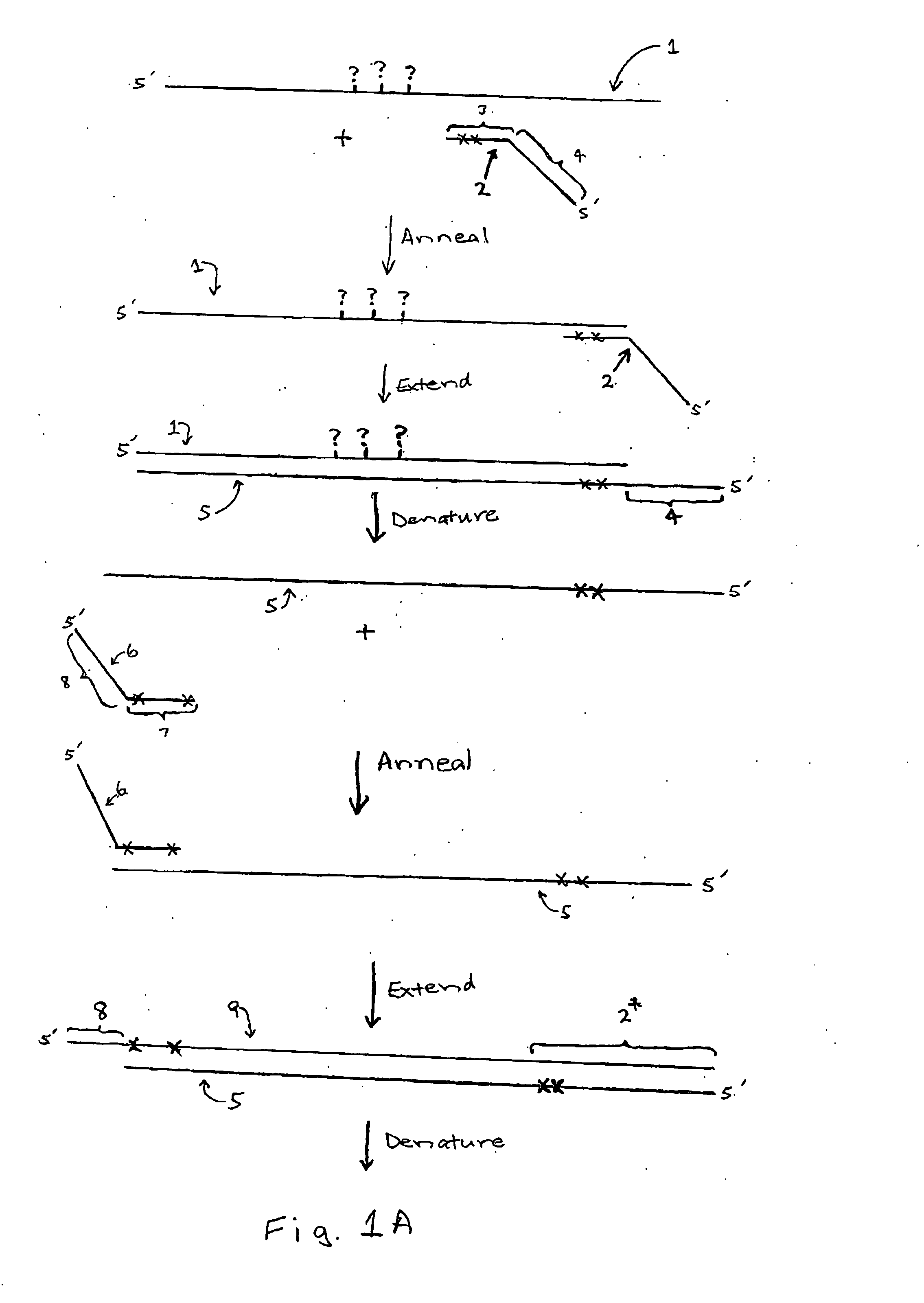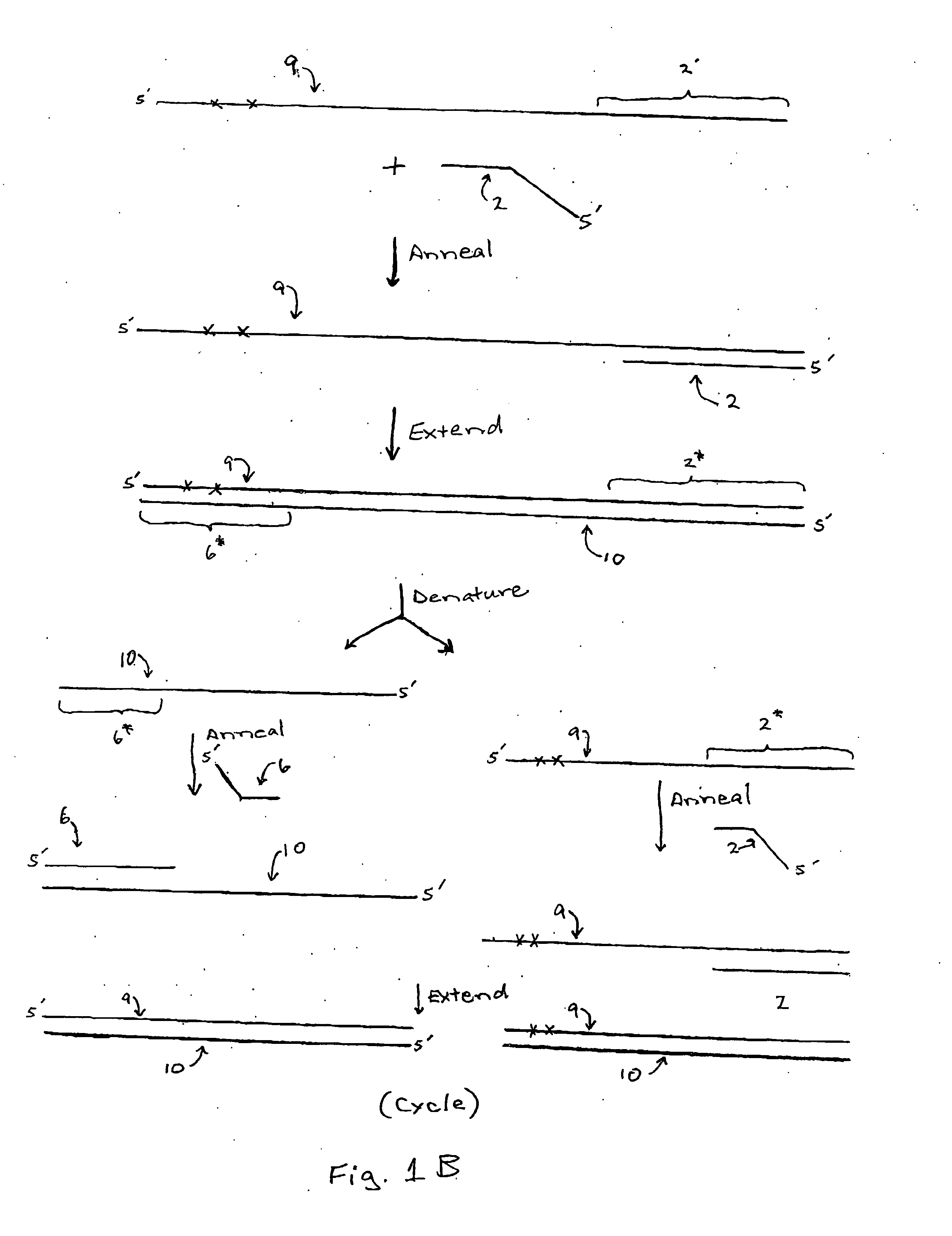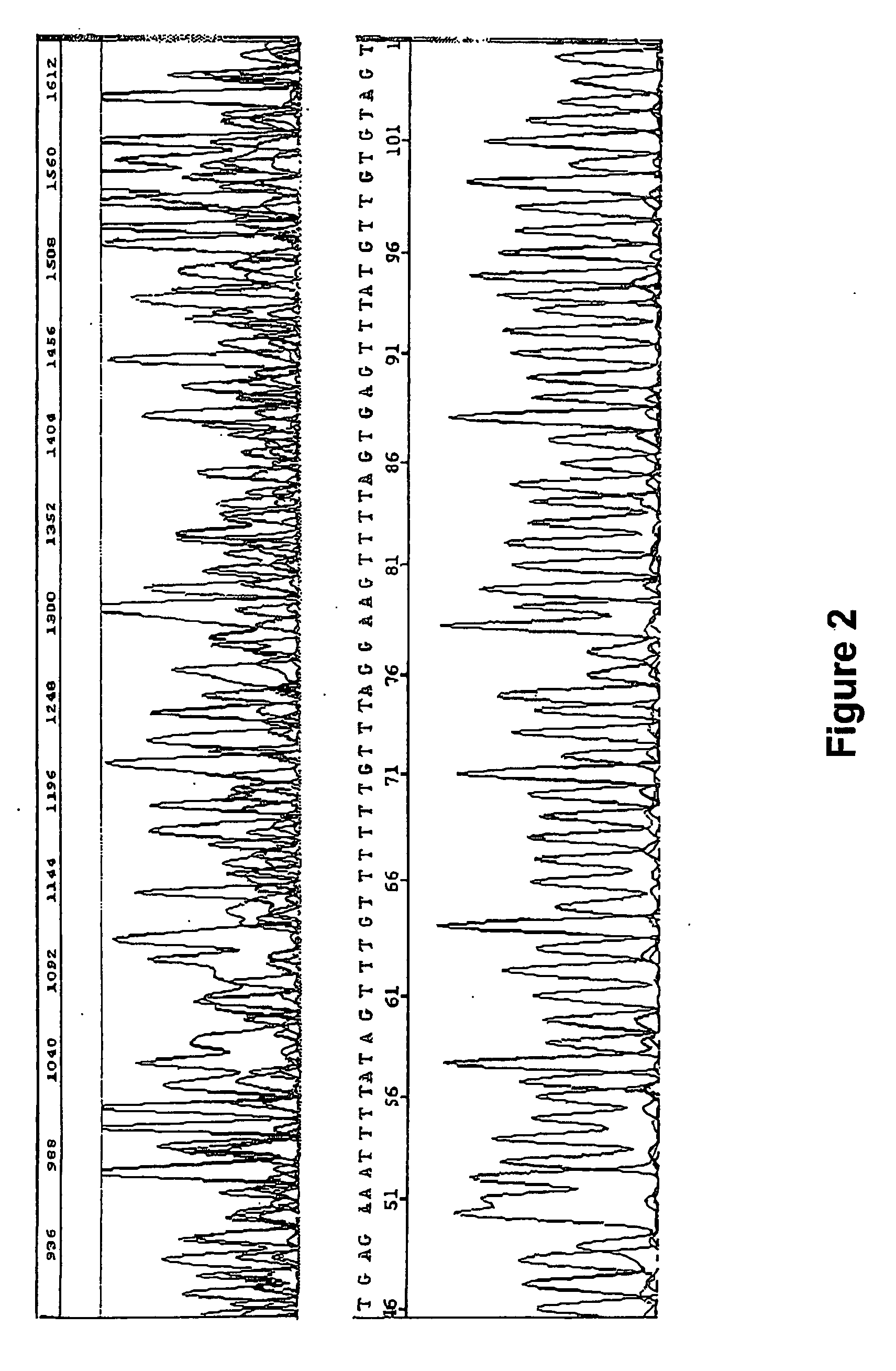Compositions, methods, and kits for analyzing DNA methylation
a technology of methylation and methylation, applied in the field of dna methylation methylation compositions, methods and kits, can solve the problems of non-specific amplification of non-target sequences, primer design, and difficulty in quantitating the relative degree of methylation, and achieve the effect of reducing the amplification bias of bisulfite converted gdna and reducing the strand amplification bias
- Summary
- Abstract
- Description
- Claims
- Application Information
AI Technical Summary
Benefits of technology
Problems solved by technology
Method used
Image
Examples
example 1
[0074] A first primer pair, designed to anneal with a bisulfite treated RasSF target sequence in gDNA, is synthesized using phosphoramidite chemistry and an automated DNA synthesizer according to the manufacturer's instructions. The illustrative tailed first primer comprises the sequence: CAGGAAACAGCTATGACCCTA*CA*CCCA*A*A*TTTCCA*TTA* (SEQ ID NO:1), including a first primer-binding site comprising a universal M13 primer sequence (shown in italics) upstream from the target-complementary portion (shown underlined). The target-complementary portion comprises the nucleotide analog 2-amino-dA (shown as “A*”). The illustrative tailed second primer comprises the sequence: TGTAAAACGACGGCCAGTTA*GTTTA*A*TGA*GTTTA*GGTTTTTT (SEQ ID NO:2), including a second primer-binding site comprising a different universal M13 primer sequence (shown in italics) upstream from the first extension product-complementary portion (shown underlined). The first extension product-complementary portion also comprises t...
example 2
[0076] To compare the sequencing results obtained for a region of a bisulfite treated gDNA BrcA target sequence, an untailed first primer pair and a corresponding tailed first primer pair were synthesized. The untailed first primer pair included a first primer with the sequence: AACAAACTAAATAACCAATCCAAAAC (SEQ ID NO:3) and a second primer with the sequence TTAGAGTAGAGGGTGAAGGTTTTTT (SEQ ID NO:4). The corresponding tailed first primer pair included a first primer with the sequence: CAGGAAACAGCTATGACCAACAAACTAAATAACCAATCCAAAAC (SEQ ID NO:5), including a first primer-binding site comprising a universal M13 primer sequence (shown in italics) upstream from the target-complementary portion (shown underlined); and a second primer with the sequence: TGTAAAACGACGGCCAGTTTAGAGTAGAGGGTGAAGGTTTTTT (SEQ ID NO:6), including a second primer-binding site comprising a different universal M13 primer sequence (shown in italics) upstream from the first extension product-complementary portion (shown unde...
example 3
[0079] To demonstrate the effect of nucleotide analog incorporation during primer extension, a tailed first primer pair was designed to amplify a region of bisulfite treated gDNA comprising a RasSF target sequence. The tailed first primer comprised the sequence: CAGGAAACAGCTATGACCCTACACCCAAATTTCCATTA (SEQ ID NO:9), including a first primer-binding site comprising a universal M13 primer sequence (shown in italics) upstream from the target-complementary portion (shown underlined); and a tailed second primer with the sequence: TGTAAAACGACGGCCAGTTAGTTTAATGAGTTTAGGTTTTTT (SEQ ID NO:10), including a second primer-binding site comprising a different universal M13 primer sequence (shown in italics) upstream from the first extension product-complementary portion (shown underlined). This tailed first primer pair was used to amplify the RasSF target in (i) a reaction composition comprising dCTP, but not dMeCTP, or (ii) a reaction composition comprising dMeCTP, but not dCTP. Two reaction compos...
PUM
| Property | Measurement | Unit |
|---|---|---|
| Temperature | aaaaa | aaaaa |
| Temperature | aaaaa | aaaaa |
| Temperature | aaaaa | aaaaa |
Abstract
Description
Claims
Application Information
 Login to View More
Login to View More - R&D
- Intellectual Property
- Life Sciences
- Materials
- Tech Scout
- Unparalleled Data Quality
- Higher Quality Content
- 60% Fewer Hallucinations
Browse by: Latest US Patents, China's latest patents, Technical Efficacy Thesaurus, Application Domain, Technology Topic, Popular Technical Reports.
© 2025 PatSnap. All rights reserved.Legal|Privacy policy|Modern Slavery Act Transparency Statement|Sitemap|About US| Contact US: help@patsnap.com



